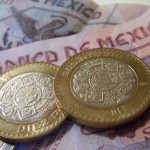Gold erased its previous daily gains and retreated to negative territory as mixed U.S. retail sales data spurred concern over an imminent deceleration of Feds monetary stimulus, thus boosting the greenback. Silver, platinum and palladium trimmed gains.
On the Comex division of the New York Mercantile Exchange, gold futures for delivery in December traded at $1 327.10 per troy ounce at 14:37 GMT, down 0.55% on the day. Prices held in range between days high at $1 340.70, near yesterday’s peak at $1 342.90, the strongest level since July 24, and low of $1 323.00 an ounce respectively. The precious metal rose 1.4% on Monday, a fourth consecutive daily gain, but todays retreat trimmed current week’s advance to 1%.
Gold fell in late European and early American trading as mixed U.S. retails data spurred concern over Feds intention to taper its Quantitative Easing program as early as September. The U.S. Commerce Department reported that U.S. retail sales rose for a fourth straight month by 0.2% in July but underperformed expectations for a 0.3% surge. Junes advance received an upward revision to 0.6% from 0.4%. Meanwhile, Core Retail Sales (Retail Sales less Autos) exceeded projections for 0.4% jump and gained 0.5% in July, while Junes reading was reassessed to 0.1% from a no-change state.
Data also showed that import prices (Import Price Index) rose by 0.2% month-on-month, much less than analysts 0.8% prediction, but still marked an improvement after Junes 0.4% contraction, which was revised down from a previous 0.2% decline. Meanwhile, on an annual basis import prices jumped by 1.0%, outperforming Junes downward revised 0.1% increase but below market projections for a 1.5% gain.
A separate report showed that U.S. Business Inventories remained unchanged in June, confounding expectations for a 0.2% surged and beating previous months 0.1% contraction, which was revised downward from a 0.1% gain.
Following the released data, the dollar soared, putting pressure on dollar-denominated commodities. The greenback trades inversely to dollar-priced raw materials as its strengthening makes commodities more expensive for foreign currency holders and reduces their appeal as an alternative investment.
The dollar index, which measures the U.S. currencys performance against six major peers, rose to 81.88 at 14:37 GMT, up 0.57% on the day. The September contract ranged between days high at 81.91, a one-week high, while days low stood at 81.42. The currency gauge jumped 0.35% on Monday and has so far advanced nearly 0.9% this week.
Dollar-denominated commodities have largely been tracking shifting expectations of an earlier-than-expected tapering of Fed’s monetary easing program, on which the strength of the dollar depends.
Investors will also be closely watching the rest of the U.S. data due this week. On Wednesday, producer prices (Producer Price Index) will likely show a slower advance than the preceding period both year-on-year and month-on-month. Thursday’s consumer inflation (CPI) should have advanced by 0.2% compared to June and 2.0% from a year earlier. Industrial Production is expected to have surged 0.3%, marking the same advance as in June. Both of Friday’s Building Permits and Housing Starts are projected to have advanced last month.
Elsewhere on the precious metals market, silver, platinum and palladium trimmed daily gains but remained on the green side. Silver for delivery in September retreated from a two-month high and traded at $21.458 an ounce at 14:31 GMT, up 0.56% on the day. Prices held in range between days high of $21.745 per ounce, the highest since June 19, while day’s low stood a $21.120. Meanwhile, platinum October futures traded at $1 506.60 an ounce, marking a 0.53% on the day. Prices rose to $1 514.65 earlier in the day, the highest since June 6, while days low was touched at $1 493.45. At the same time, palladium for September delivery fell to $738.30 an ounce, trimming its daily advance to 0.09%. Futures ranged between days high and low of $742.60 and $735.30 per troy ounce respectively.





